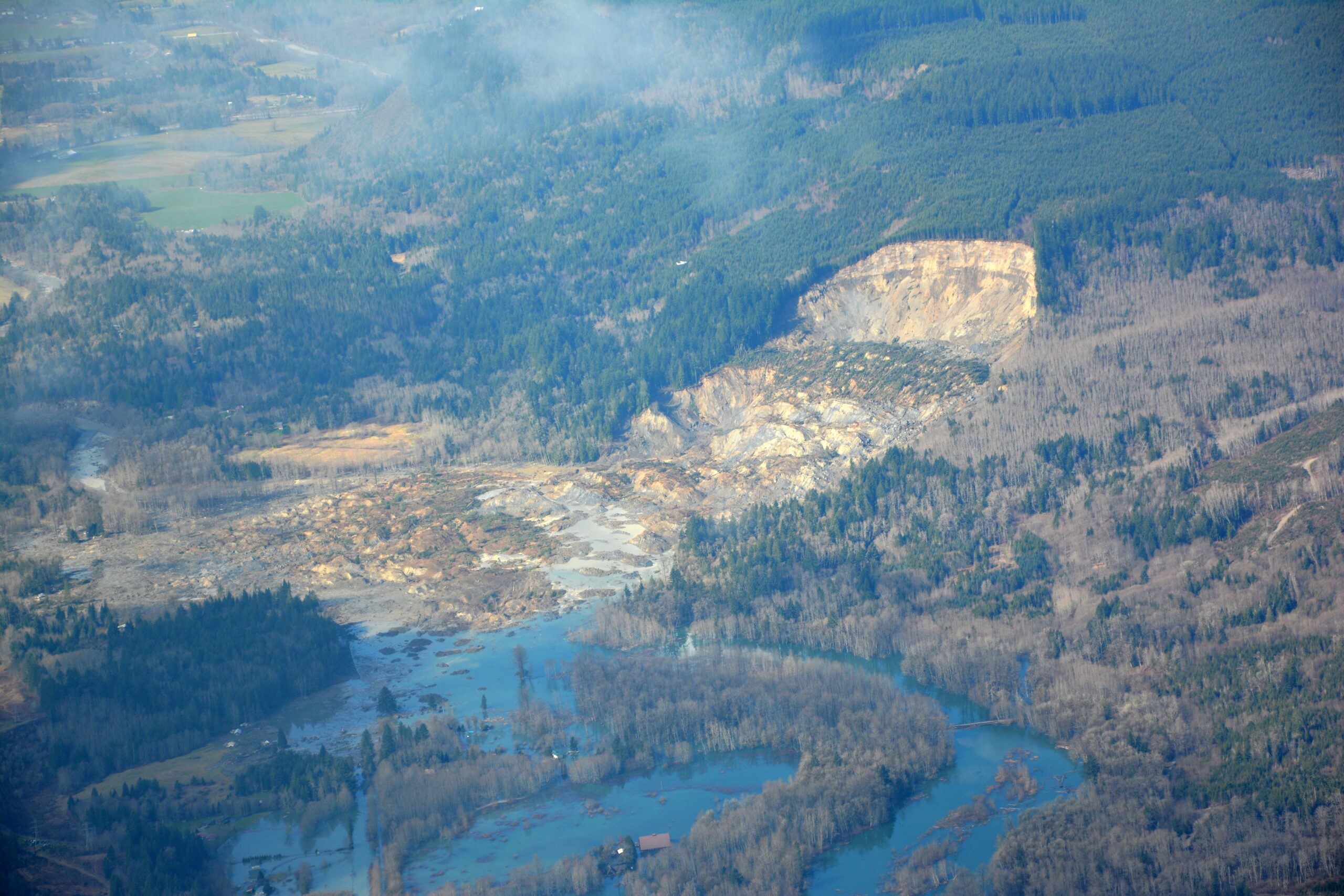Today is the fifth anniversary of the devastating Oso mudslide, which took the lives of forty-three people and destroyed forty-nine structures.

In honor of those who perished that tragic day and on behalf of the more than seven million Washingtonians living with the risk of geologic hazards like landslides, tsunamis, earthquakes, and lahars, NPI is renewing its call for the Legislature to appropriate funds so these hazards can be researched and better understood by our Department of Natural Resources (DNR).
Washington is unquestionably a beautiful and majestic place, but it’s also a dangerous place. This region we love is part of the very active Pacific Ring of Fire.
Earthquakes, tsunamis, lahars, and slides have shaped the history of our region. All are hazards that we can expect to strike again, but we have not made studying and preparing for them a true priority. Governor Inslee’s Resilient Washington subcabinet was and is a great idea, but we need to be doing more… a lot more.
It’s time for the Legislature to step up.
Commissioner of Public Lands Hillary Franz and the Department of Natural Resources have developed three proposals that would provide us with badly needed data about geologic hazards, so we can make better decisions about our next steps. Collectively, these proposals would cost only a few million dollars.
Yet only one was included in Governor Inslee’s proposed budgets for the upcoming biennium… and even then, the full amount requested wasn’t provided. We call on the House and Senate to fund each of these proposals in their entirety.
The three budget requests are as follows:
- FY 2019–2021 capital budget request: $5 million for school seismic safety (funds 3.3 FTEs to conduct comprehensive seismic and engineering assessments on approximately four hundred school buildings in areas of Washington at high risk of earthquake damage)
- FY 2019–2021 operating budget request: $2.9 million for glacial landslide research (funds a detailed study of the Stillaguamish Valley to advance the understanding of how glacial geology influences the landslides in this area and other areas of Washington with similar geology)
- FY 2019–2021 operating budget request: $234,000 for post-wildfire landslide teams (funds overtime and travel costs for scientists to assemble, lead, and direct a team to inspect areas following wildfires for post-fire environmental hazards such as landslides)
Additionally, DNR has proposed investing $632,000 in the next biennium and $292,000 per year after that to explore renewable energy sources to promote rural economies. Funding would allow DNR to map high and low temperature geothermal resources and drill wells to test potential geothermal sites. While this request does not pertain to geologic hazards, we believe it should be funded too.
Funding these essential proposals in full is one of NPI’s top legislative priorities for this session. I have repeatedly testified before the House Appropriations Committee and the Senate Ways & Means Committee in support of increased funding for geologic hazards research, and I plan to do so again on NPI’s behalf.
We urge Democrats and Republicans in the Legislature to join forces in support of funding geologic hazards research. We can’t keep putting this off.
Our state is growing; more people continue to move here and start businesses here. We all deserve a government that is working to understand the risks of the hazards around us and prepare for the worst.
We’ve seen what earthquakes, tsunamis, slides, and lahars can do.
The Nisqually quake in 2001 was a wake-up call. So was the Oso slide five years ago. No more delaying; it’s time to act! We’re a wealthy state.
We have the resources. Let’s appropriate the money and empower DNR to gather the data that we need to make sound decisions for our future.

